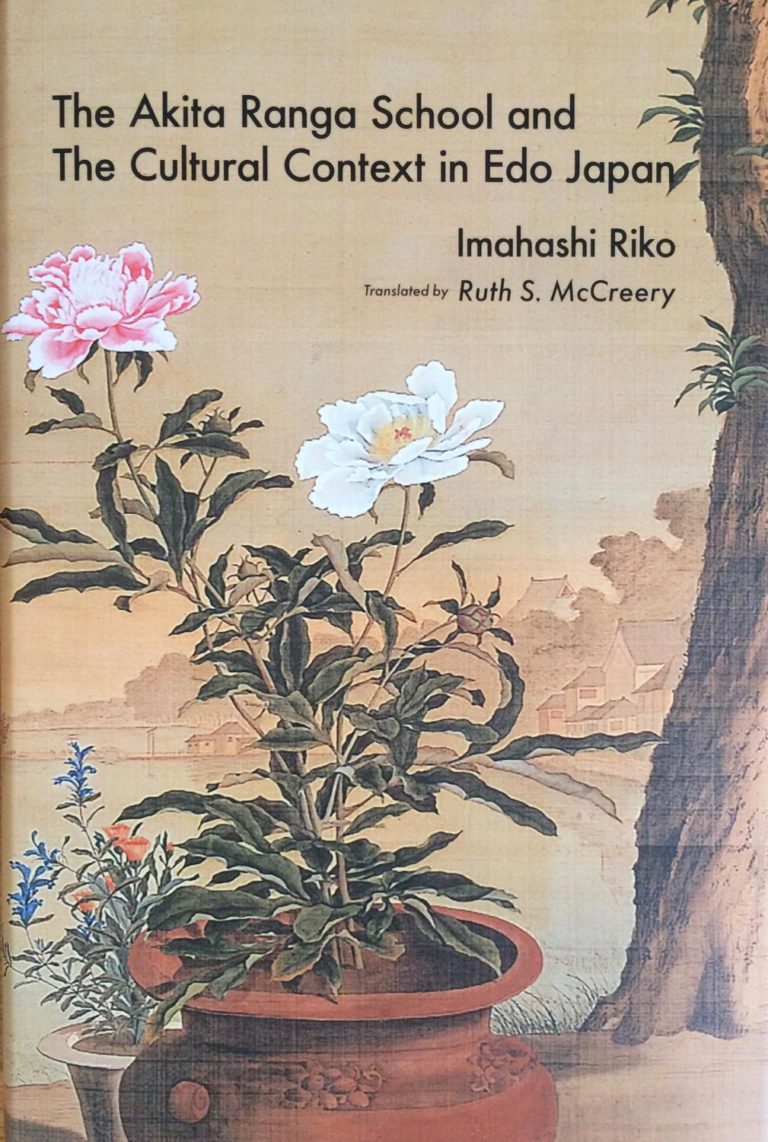Imahashi Riko explores paintings by the Akita Ranga school—or more accurately, a single work by Odano Naotake (1749–80)—in her new volume. The painting, entitled Shinobazu Pond (Shinobazu no ike-zu), has exceptional qualities including its large size, fusion of disparate elements, and mesmerizing clarity. In the eighteenth century, the neighborhood of Shinobazu Pond in Ueno flourished as a center of scholarship and was acclaimed for [End Page 151] its lotus-filled pond. Strangely, however, Naotake’s pond is lotus-free. Other peculiarities appear in Naotake’s painting, such as an off-balance placement of a pot of peonies in the right foreground and a haunting lucidity in the rendering of the plant’s blossoms. The painting is somehow “imbued with a dreamlike tranquility,” as Imahashi states (p. 24). Imahashi reconstructs the layered depths of Shinobazu Pond, as she places it in the milieu of educated eighteenth-century Edoites.
- Click to share on Facebook (Opens in new window) Facebook
- Click to share on X (Opens in new window) X
- Click to print (Opens in new window) Print
- More
- Click to share on LinkedIn (Opens in new window) LinkedIn
- Click to share on Reddit (Opens in new window) Reddit
- Click to share on Tumblr (Opens in new window) Tumblr
- Click to share on Telegram (Opens in new window) Telegram
- Click to share on WhatsApp (Opens in new window) WhatsApp
- Click to share on Pinterest (Opens in new window) Pinterest
- Click to share on Pocket (Opens in new window) Pocket

